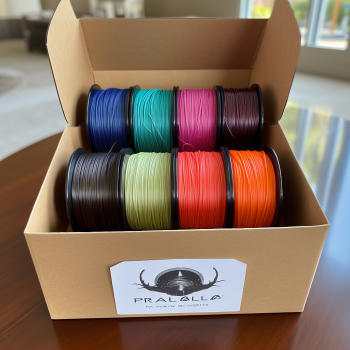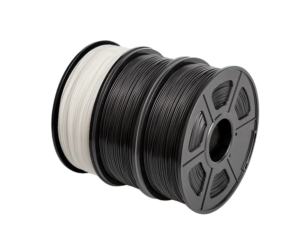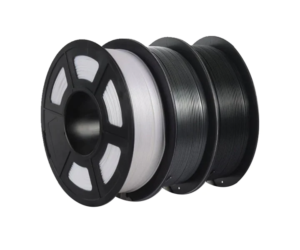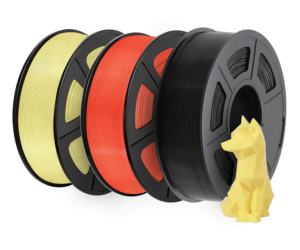3D printing has revolutionized the way we create and manufacture objects. One of the most important aspects of 3D printing is choosing the right filament for your project. In this comprehensive guide, we will explore three popular filaments—PLA, PETG, and ABS—comparing their properties, uses, and helping you decide which one is best suited for your 3D printing needs.
Overview of 3D Printing Filaments
PLA, PETG, and ABS are the most commonly used 3D printing filaments, each offering unique properties and benefits. To better understand their differences, let’s take a closer look at each filament type:
- PLA (Polylactic Acid) PLA is a biodegradable thermoplastic derived from renewable resources, such as cornstarch or sugarcane. This environmentally friendly filament is the most popular choice for beginners due to its ease of use and relatively low printing temperature.
- PETG (Polyethylene Terephthalate Glycol) PETG is a strong, durable, and versatile filament that combines the best features of PLA and ABS. It offers excellent layer adhesion, flexibility, and impact resistance, making it a popular choice for functional parts and prototypes.
- ABS (Acrylonitrile Butadiene Styrene) ABS is a petroleum-based thermoplastic known for its strength, durability, and heat resistance. It is a popular choice for engineering applications, automotive parts, and consumer products.
Comparing PLA, PETG, and ABS
To help you decide which filament is right for your project, we’ll compare PLA, PETG, and ABS based on several key factors:
- Print Temperature
- PLA: 180-220°C
- PETG: 230-250°C
- ABS: 220-250°C
- Heated Bed Temperature
- PLA: 20-60°C
- PETG: 70-90°C
- ABS: 80-110°C
- Durability
- PLA: Low to medium
- PETG: Medium to high
- ABS: High
- Flexibility
- PLA: Low
- PETG: Medium
- ABS: Medium
- Environmental Impact
- PLA: Biodegradable and eco-friendly
- PETG: Recyclable but not biodegradable
- ABS: Non-biodegradable and petroleum-based
Choosing the Right Filament for Your Project
Based on the properties discussed, here are some guidelines to help you choose the right filament:
- PLA: Ideal for beginners, decorative items, and non-functional prototypes. It is not suitable for high-temperature or outdoor applications due to its low heat resistance and biodegradable nature.
- PETG: Great for functional parts, prototypes, and projects requiring strength, durability, and some flexibility. However, PETG can be more difficult to print than PLA, so it may not be the best choice for beginners.
- ABS: Best suited for engineering applications, automotive parts, and consumer products requiring strength and heat resistance. It can be challenging to print, and the fumes may be harmful if not properly ventilated.
Choosing the right 3D printing filament is essential for achieving the desired results in your projects. While PLA, PETG, and ABS each offer unique benefits, it’s essential to consider factors such as print temperature, durability, and environmental



